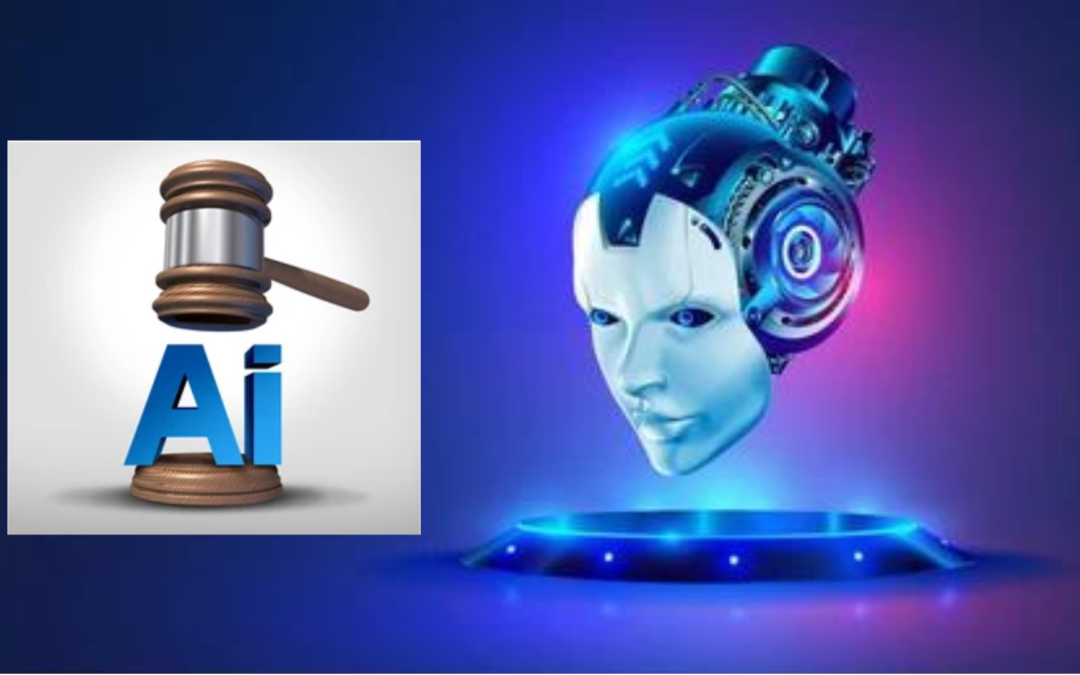
by admin | Aug 24, 2023 | Digital Business, Technology
Introduction
In today’s rapidly evolving digital landscape, artificial intelligence (AI) has emerged as a game-changer, transforming traditional business models and propelling organizations toward unprecedented growth. This seismic shift is reshaping the way companies operate, interact with customers, and drive innovation. In this blog post, we delve into the profound impact of AI on digital business models, Revolutionizing Business Models: The Impact of AI on Digital Transformation”, exploring its potential, benefits, and challenges.
The Role of AI in Digital Business Models
The Role of AI in Digital Business Models: AI is at the heart of the digital revolution, empowering businesses to adapt, thrive, and lead. The integration of AI-driven solutions into various aspects of business models has opened up new avenues for growth and optimization. Here are some key ways AI is reshaping digital business models:
- Personalized Customer Experiences: AI enables businesses to understand customer preferences and behaviors, allowing them to deliver highly personalized experiences. From recommendation engines on e-commerce platforms to chatbots offering real-time assistance, AI enhances customer engagement and satisfaction.
- Data-Driven Decision Making: AI processes vast amounts of data swiftly, extracting actionable insights that inform strategic decisions. Businesses can optimize operations, identify market trends, and refine their offerings based on data-driven intelligence.
- Process Automation: Repetitive tasks can be automated through AI-powered tools, reducing human error and increasing efficiency. This automation liberates human resources to focus on tasks that require creativity and critical thinking.
- Innovative Products and Services: AI paves the way for innovative product and service offerings. From self-learning software to predictive maintenance in manufacturing, AI-driven solutions revolutionize industries by enabling disruptive innovation.
The marriage of AI and digital business models brings forth a multitude of benefits:
- Enhanced Efficiency: Automation and optimization of processes result in streamlined operations, reduced costs, and faster time-to-market.
- Improved Customer Engagement: Personalized experiences foster stronger customer relationships, boosting loyalty and retention rates.
- Data Monetization: Businesses can capitalize on data assets by generating insights, which can be offered as a separate service to other enterprises.
- Agile Decision Making: Real-time insights enable agile decision-making, helping companies adapt swiftly to market changes.
Challenges and Considerations
While AI holds tremendous potential, there are challenges to navigate:
- Data Privacy and Security: The collection and use of customer data raise concerns about privacy and security. Businesses must prioritize robust data protection measures.
- Skill Gap: Developing and maintaining AI solutions necessitates a skilled workforce. Upskilling employees or hiring AI experts may be essential.
- Ethical Considerations: Decisions made by AI can carry ethical implications. Ensuring AI is unbiased and transparent is crucial.
- Integration Complexity: Integrating AI into existing business models requires careful planning and can be technically complex.
Looking Ahead: The Future of AI in Digital Business Models
As AI technologies continue to advance, the impact on digital business models will only deepen. The convergence of AI, the Internet of Things (IoT), and 5G technology will create unprecedented opportunities for innovation. Businesses that proactively embrace AI and adapt their models stand to gain a competitive edge in the digital economy.
Conclusion: The symbiotic relationship between AI and digital business models is reshaping industries and redefining the concept of business as usual. The benefits of AI integration are vast, but the journey isn’t without challenges. By leveraging AI’s potential while remaining vigilant about ethical considerations and security, businesses can position themselves as leaders in the digital age. The future belongs to those who embrace change and harness the power of AI to drive innovation and growth.
Meta Description: Explore how AI is revolutionizing digital business models. Learn about the benefits, challenges, and future possibilities of integrating AI for enhanced customer experiences and operational efficiency.

by admin | Aug 10, 2023 | Google, Technology
Open Google Calendar:
Go to the Google Calendar website (https://calendar.google.com) and make sure you’re signed in to your Google account.
Select the Date and Time:
Click on the date and time slot that corresponds to the start of your working hours.
Create a New Event:
- A pop-up window will appear. If it doesn’t, click on the “+ Create” button or the “+ Create” link in the top-left corner of the page.
- Enter Event Details: Fill in the event details as follows:
- Event Title: Enter a title that indicates your working hours (e.g., “Working Hours,” “Office Time,” etc.).
- Date: The date you selected will automatically be filled in.
- Start Time: Set the start time of your working hours.
- End Time: Set the end time of your working hours.
- Location: You can enter your workplace address or any relevant location details here.
- Calendar: Choose the calendar you want the event to be associated with (if you have multiple calendars).
- Set Recurrence (Optional): If you want these working hours to repeat on specific days, click on the “Does not repeat” dropdown and select the frequency (e.g., daily, weekly). Then, choose the days on which you want the working hours to repeat.
- Save the Event: Once you’ve filled in the event details, click the “Save” or “Add” button. The event will now be added to your Google Calendar.
- Repeat for Other Days (Optional): If you want to create working hour events for other days, simply repeat the process by selecting the desired date and time and starting a new event.
Remember that this method creates individual events for each instance of your working hours. If you have a regular schedule, you might want to use the recurring event feature to save time and avoid creating separate events for each day.

by admin | Aug 9, 2023 | Quantum Computing, Technology
Quantum computing is a rapidly advancing field of study at the intersection of computer science, mathematics, and quantum physics. Unlike classical computers, which use bits as the fundamental unit of information (representing either a 0 or a 1), quantum computers use quantum bits or qubits, which can exist in a superposition of both 0 and 1 states simultaneously. This property of superposition, along with other quantum phenomena such as entanglement, allows quantum computers to perform certain types of calculations much faster than classical computers.
Key Concepts in Quantum Computing:
- Qubits: The fundamental building blocks of quantum computers. Unlike classical bits, which are binary, qubits can represent a continuous range of values due to their superposition property. This enables quantum computers to process and manipulate information in ways that classical computers cannot.
- Superposition: Qubits can exist in a superposition of states, meaning they can be in a combination of both 0 and 1 states simultaneously. This property enables quantum computers to perform multiple calculations at once, potentially leading to exponential speedup for certain problems.
- Entanglement: When qubits become entangled, the state of one qubit is dependent on the state of another, even if they are physically separated. This phenomenon enables quantum computers to perform complex operations that involve interconnected qubits, enhancing their computational power.
- Quantum Gates: Quantum gates are analogous to classical logic gates, but they manipulate qubits’ quantum states. These gates perform operations that rotate or transform qubit states, allowing for the execution of quantum algorithms.
- Quantum Algorithms: Algorithms designed specifically to harness the computational power of quantum computers. Prominent examples include Shor’s algorithm (for factoring large numbers) and Grover’s algorithm (for searching unsorted databases), which demonstrate the potential quantum speedup over classical algorithms.
- Quantum Parallelism: Quantum computers can process multiple possibilities simultaneously due to superposition. This parallelism allows quantum computers to solve certain problems faster than classical computers, especially in areas such as cryptography, optimization, and material science.
- Quantum Error Correction: Quantum computers are sensitive to environmental noise and decoherence, which can cause errors in calculations. Quantum error correction is a crucial area of research that aims to develop techniques to mitigate and correct these errors, ensuring the reliability of quantum computations.
- Quantum Supremacy: A term used to describe the point at which a quantum computer can perform a specific task faster than the most advanced classical computers. Achieving quantum supremacy demonstrates the practical viability and potential advantages of quantum computing.
- Applications: Quantum computing holds the potential to revolutionize various fields, including cryptography (breaking classical encryption methods and developing quantum-safe cryptography), optimization (solving complex optimization problems), material science (simulating and designing new materials), drug discovery (accelerating molecular simulations), and more.
- Current Challenges: Quantum computing faces significant challenges, including qubit stability, error correction, scalability, and the development of practical quantum algorithms for real-world problems. Researchers are actively working on addressing these challenges to make quantum computers more practical and accessible.
It’s important to note that while quantum computing has made significant strides, practical, large-scale quantum computers that can outperform classical computers for a wide range of tasks are still under development. Many companies, research institutions, and governments are investing in quantum computing research to unlock its full potential.

by admin | Aug 1, 2023 | CHAT GPT, Open AI
As of my last update in September 2021, new AI systems can raise various copyright law issues. Let’s discuss some of the key concerns and potential solutions:
Training Data and Copyright Infringement:
Training Data and Copyright Infringement: AI systems often require extensive datasets to be trained effectively. If these datasets include copyrighted material, using them without proper authorization from the copyright owners could lead to copyright infringement.
Solution:
Companies and developers should ensure that they have the necessary rights or licenses to use copyrighted data in their AI training. This may involve obtaining explicit permission from copyright holders or using publicly available, open-source, or properly licensed data.
AI-Generated Content:
AI systems can produce creative works like art, music, or text. The question of copyright ownership arises when an AI system generates content that may resemble copyrighted works or uses copyrighted elements to create new content.
Solution:
The issue of copyright ownership for AI-generated content is a complex and evolving area of law. Some countries have debated granting AI systems legal personhood or considering the AI creator as the copyright holder. Until there is clear legislation, developers and users should clarify the ownership and usage rights of AI-generated content through explicit agreements or licenses.
Fair Use and AI:
Fair use is a legal doctrine that allows limited use of copyrighted material without permission for purposes such as criticism, commentary, news reporting, education, or research. However, applying fair use to AI-generated content can be challenging due to the automated nature of AI systems.
Solution:
Developers should be cautious about using copyrighted material in AI-generated content, even if they believe it falls under fair use. Obtaining permission or licenses when using copyrighted material is the safest approach.
AI in Content Moderation:
Some platforms use AI systems to automatically detect and remove copyrighted content uploaded by users. However, AI systems might not always accurately determine fair use or other exceptions, leading to potential content removal mistakes.
Solution:
Content platforms should implement transparent and robust appeals processes to allow users to challenge automated takedowns. Additionally, fine-tuning AI models to recognize fair use and other exceptions can help reduce erroneous content removal.
AI-Enabled Plagiarism:
AI systems can be misused to automatically create content by combining and paraphrasing existing copyrighted works, leading to plagiarism issues.
Solution:
Content platforms and educational institutions should invest in plagiarism detection systems that can identify AI-generated plagiarism. Educating content creators about plagiarism and copyright law is also crucial.
Overall, the intersection of AI and copyright law remains a complex and evolving legal area. Developers, content creators, and companies should stay informed about copyright regulations, consult legal experts when necessary, and implement best practices to minimize copyright-related risks and ensure compliance. Please note that the legal landscape may have evolved since my last update in 2021, so it’s always best to consult up-to-date legal sources and professionals for the latest information.




